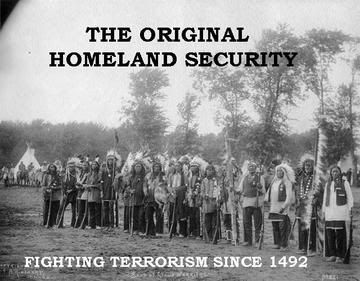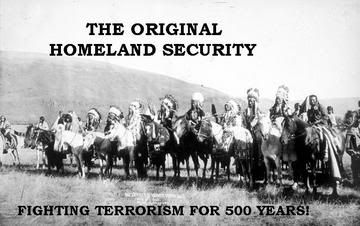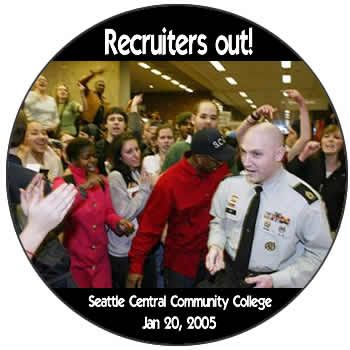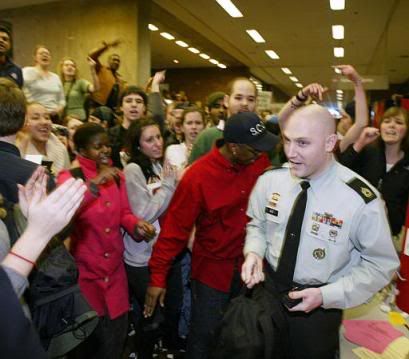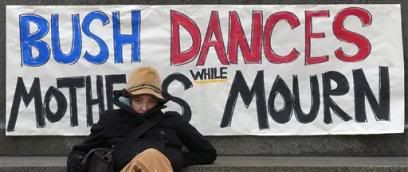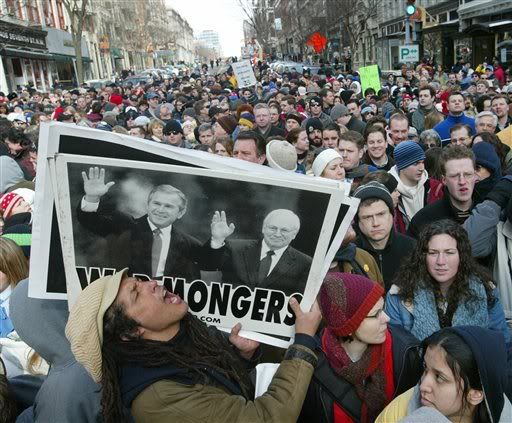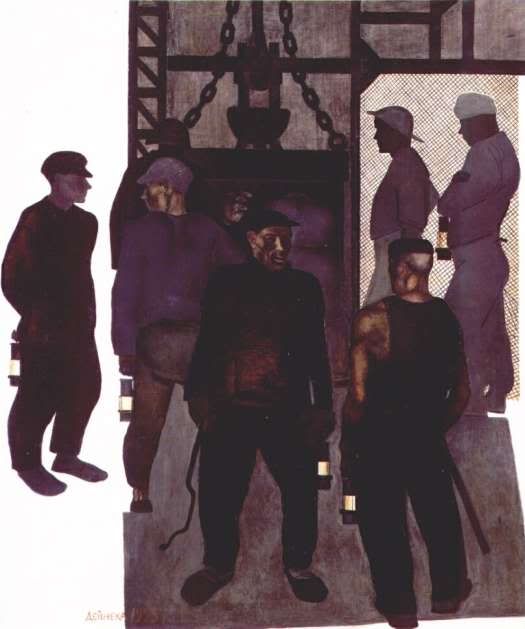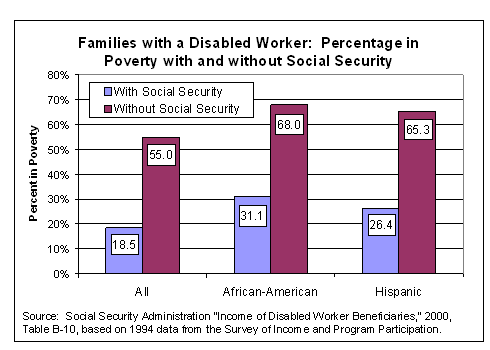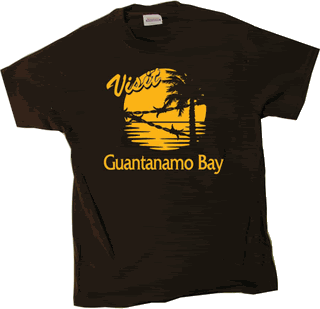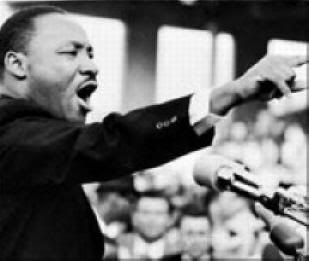The January 30, 2005 elections in Iraq are the textbook definition of "demonstration elections":
Elections have been used by the United States as an instrument of management in Third World client states since the turn of the century. The functions which they have served, however, have changed in accordance with the shifting demands placed upon the managers. The aim in holding such elections has always been to ensure "stability". In the first half of this century the threat to stability came almost exclusively from within the client states, which were subject to internal turmoil and thus threatened with a loss of "independence." In recent decades, serious challenges have arisen from within the United States itself. It is this shift in functional need that has led to the emergence of elections oriented to influencing the home (U.S.) population, which we designate "demonstration elections." (Edward S. Herman and Frank Brodhead, Demonstration Elections: US-staged Elections in the Dominican Republic, Vietnam, and El Salvador, South End Press, 1984, p. 1)
As Edward S. Herman ("The Afghan, El Salvador, and Iraq Elections: U.S. Managed Elections, with the Threat of Violence, Are Called 'Democratic,'"
Z Magazine,
December 2004) and Frank Brodhead ("Reframing the Iraq Election,"
ZNet,
January 21, 2005) note in their respective commentaries on the Iraqi elections, cooperation of the corporate media in the United States is the key to successful "demonstration elections" -- cooperation that Washington can take for granted.
In concrete terms, what is the corporate media's role in "demonstration elections"?
The patriotic media's role is to include in its reporting certain information or visuals while excluding others. For example, off the media agenda are discussions of the right of government opponents to campaign (without being killed); the absence of large-scale financing of favored candidates by foreign governments or patrons; the presence of meaningful freedoms of speech, the press, and assembly; the ability of voters to cast their ballots freely and safely without intimidation by domestic or foreign military forces or "death squads"; the existence of a truly secret ballot; an honest counting of the ballots; and the assurance that the person who gets the most votes will win the election. On the agenda for a patriotic mass media are primarily election-day items: a large turnout (indicating voter support for the election itself and thus identifying the election with "democracy"); statements by political leaders and "ordinary people" that they are voting because they want freedom; and ineffective opposition to the election, perhaps even military attacks, by opponents of the government. (In an election that the United States opposes, such as the Nicaragua election in 1984, the media's priorities are reversed: on the agenda is the question of the pre-requisites of democracy; meaningless and thus off the agenda are the election-day events, the long lines of voters, etc.) (Brodhead, January 21, 2005)
The way the front page
New York Times article by Dexter Filkins reports on the Moktada al-Sadr faction's subtle defiance of "demonstration elections" is an example of the corporate media doing its job: "Shiite Faction Ready to Shun Sunday's Election in Iraq" (
January 29, 2005). Clerics allied with Sadr such as Nasir al-Saedy, as well as Sadr himself, "uttered not a single word about the vote" at Friday Prayers, according to Filkins (
January 29, 2005).
You might think that's praiseworthy conduct, showing proper regard for the separation of church and state, in contrast to the action of Grand Ayatollah Ali al-Sistani, who issued "a
fatwa saying all Shiia men and women have
an obligation to vote in the upcoming election" (emphasis added, Jim Garamone/American Forces Press Service, "No Question on Jan. 30 Iraqi Elections, Official Says,"
January 4, 2005). The Sadr faction did not urge slum dwellers, among whom they are popular, to vote for the list that they favor, nor did they exhort them to boycott or sabotage the elections. Isn't clerical reticence appropriate?
Not so, in the opinion of the
New York Times:
Sheik Saedy is an acolyte of Moktada al-Sadr, the rebel Shiite cleric, and his Friday sermon seemed to settle for good the question of Mr. Sadr's place in the country's new democratic order.
. . . . . . . . . . . . . . . . . . . .
Until now, Iraq's mainstream Shiite leaders, who have been trying to coax Mr. Sadr and his vast following into the democratic process, had been hoping that he would finally tell his followers to give up their rebellion and turn to the ballot box.
His silence, and that of his supporters like Sheik Saedy, signals that he had decided to hedge his bets against the election. He wants the benefits of being part of the democratic process, while publicly denouncing it for the followers who do not subscribe to it. (Filkins, January 29, 2005)
The purpose of the Iraqi elections is to demonstrate that Iraqis are "willing to identify 'democracy' with the political process created by the United States" (Brodhead,
January 21, 2005). Therefore, the corporate media, observing the protocol of "demonstration elections," industriously try to create an impression that the Sadr faction are against democracy itself,
solely by virtue of their quiet refusal to browbeat their "vast following" (Filkins,
January 29, 2005) into believing that the US-staged "demonstration elections" are free, fair, and democratic ones in which it is their religious duty to participate (you know that the corporate media would bathe the Sadr faction in a halo if only they embraced the "demonstration elections"). After all, the only "democratic process" mentionable in the
New York Times is one designated by Washington as such. Besides, the Sadr faction's silent disobedience is likely to affect the all-important turnout: "it foreshadowed a less than overwhelming voter turnout in many parts of Iraq" (Filkins,
January 29, 2005).
Needless to say, the idea that it is people's right to evaluate whether or not an election is free, fair, and democratic and that boycotting an unfree, unfair, and undemocratic election is a time-honored tactic of democrats everywhere is unspeakable in the corporate media.





